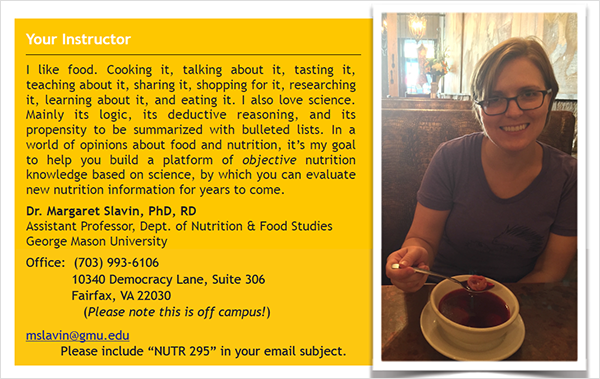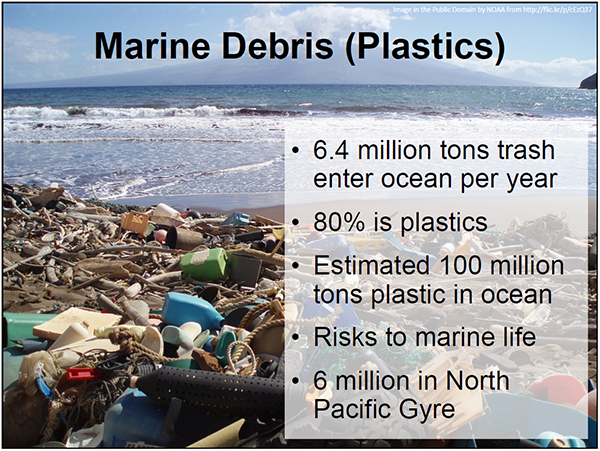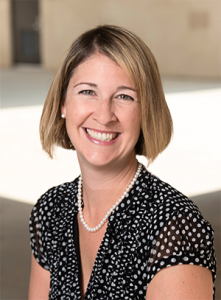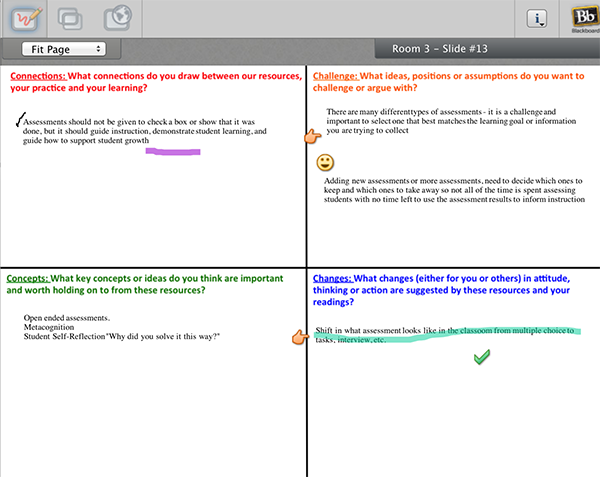
Category: What’s New


![]()
Have you heard about the Online Virginia Network (OVN)? Since May 2017, George Mason University has been a part of this state-supported initiative. In partnership with Old Dominion University and Virginia’s Community Colleges, Mason is targeting adult learners, many of whom already have some college credits but never finished their bachelor’s degrees. The OVN makes it easier for Virginians to complete their undergraduate degrees online.
Mason, ODU, and VCCS provide a combined total of 59 different degree programs, many of which are in high demand in the Commonwealth, including business, computer science, education, and nursing. Are you interested in the costs of pursuing your bachelor’s degree? The OVN website allows you to estimate the costs of your degree using the cost calculator feature. Are you looking for time and flexibility in your schedule to pursue your degree? The online programs are especially convenient for those who are working, supporting a family, or serving at one of Virginia’s military bases, giving them the same quality of faculty, courses, and support through a different medium.
Online learning is the most flexible way to complete an education in a way that fits with your lifestyle. The Online Virginia Network continues Mason’s commitment to you by providing accessible alternatives to conventional learning in order to increase higher education access to all Virginians. For more information, visit onlinevirginia.net.
When Dr. Melissa Broeckelman-Post joined the Mason community in fall of 2013, she and colleague Lance Schmeidler immediately set to work rebuilding the Basic Course curriculum. Leveraging Schmeidler’s decade of institutional knowledge with Broeckelman-Post’s background in the field, the duo integrated core philosophies and innovative technologies into the university’s introductory communication courses.
With all Mason undergraduates taking COMM 100: Public Speaking or COMM 101: Interpersonal Communication to build Mason Core competencies, creating accessible pathways to the coursework has been a significant department initiative. In fall 2015, COMM 100 was piloted as a fully online course for the first time.
“Accessibility is one of the greatest benefits of the online environment. We wanted to accommodate deployed students, parents, those with full-time jobs, physical disabilities, or other needs,” states Broeckelman-Post. “It is important that we’re able to reach diverse students with a diverse set of experiences.”
Setting the tone for the semester, the COMM 100 welcome message briefs students on course expectations and navigation while encouraging them to dive right into the online environment. Image courtesy of Profs. Lance Schmeidler and Melissa Broeckelman-Post.
The inherent flexibility offers convenience for students, the integration of assignments in Blackboard has streamlined the course management process, and standardized assessment procedures allow for consistent data collection across all course sections and modalities. Additionally, while face-to-face communication remains foundational to the field of communication, these professors have noted students’ ability to reach similar competencies in the online classroom.
“Stereotypically, many often think of public speaking as one person speaking in a public space, but that’s not necessarily how it happens anymore,” explains Broeckelman-Post. “Thinking about the global workplace, students will encounter jobs where a lot of communication occurs through web presentations. The online section of this course helps capture how students will need to interact in today’s workplace.”
As the flipped design of face-to-face sections emphasizes out of class preparation, the same activities are able to occur in the online classroom with slight adjustments for monitoring purposes. One advantage that the online format affords is the chance to “meet” and interact with students immediately.
“One thing I really enjoy is introductory speech assignment,” says Schmeidler. “I can learn a lot about their interests and backgrounds, and they get to experience a structured activity and discussion board conversations before the first day of class. We go in already having seen them a few times on videos. It creates a learning community that lets them take bigger risks.”
Discussion board assignments, like the introductory speech and commemorative speech, allow online COMM 100 students to engage asynchronously by posting video responses. Image courtesy of Profs. Lance Schmeidler and Melissa Broeckelman-Post.
This semester, Dr. Margaret Slavin wanted to try something new in her online section of NUTR 295: Introduction to Nutrition. Following a three-day Online Learning Consortium (OLC) workshop, Dr. Slavin was intrigued by the idea of using an interactive syllabus to engage her students from day one.
“In an online course, you have no guarantee that students are reading the syllabus. There is no ‘syllabus day’ to ensure that they know what to expect from the course,” explains Dr. Slavin. “I like the idea of making the syllabus more accessible and reader friendly, something that students can quickly glance at later in the semester and find the information they need.”
Using a Mac program called Pages, she was able to find and edit a basic template, resulting in a truly colorful and inviting NUTR 295 syllabus. Dr. Slavin also provides a plain text version for any students who may prefer it or use a screen reader.

In her online section of NUTR 295, Dr. Margaret Slavin shares her own appreciation for food to inspire nutritional interest in her students. In the image above, taken at Staropolska Restaurant in Chicago, she enjoys a Polish dish of clear red borscht (beetroot) soup with mushroom uszka (dumplings). Image and syllabus courtesy of Dr. Slavin.
A non-lab natural science option for Mason Core, NUTR 295 is available online every semester, including summer. The format is especially beneficial for learning introductory content. “In some ways, nutrition is easier to talk about online,” suggests Dr. Slavin. “We can really pull the information apart, find examples more easily, and talk about them on the discussion boards.”
This course also offers a robust learning atmosphere full of diverse disciplines and perspectives. While dance majors or student athletes may consider the link between nutrition and professional goals, science majors are able to complement the conversation with feedback on how nutritional databases may be used to calculate dietary intakes.
This personal aspect of the course offers a unique opportunity for students to engage in online learning. Dr. Slavin shares, “In the online environment, it can be hard for students to find that self-motivation to stay on track. With nutrition, I find the content is something that they find personally relevant and keeps them on task.”
If you are interested in discovering examples of ‘nutritional misinformation’ or debating controversial nutrition topics (e.g. is organic food healthier or more nutritious than conventionally grown food?), then NUTR 295 is an excellent course to try online. Check our online courses page for upcoming sections!

In her eight-page colorful syllabus, Dr. Slavin combines manageable chunks of information with an interactive layout, calling attention to essential course information like grading expectations. Image and syllabus courtesy of Dr. Slavin.
Housed in Mason’s College of Education and Human Development (CEHD), the Advanced Studies in Teaching and Learning (ASTL) curriculum focuses on helping K-12 professionals to achieve a deeper understanding of student learning, improve students’ classroom performance, and meet individual student needs. With many program participants teaching abroad in China, Ukraine, Sweden, South Africa, and beyond, the ASTL division now offers many of its core courses online.
A unique combination of synchronous and asynchronous coursework allows for participation across all time zones, incorporating constant access to course content as well as various opportunities to interact and engage as a live classroom community. In fact, peer collaboration continues to be a core component of the ASTL experience, even online.
“For our online classes to be effective, we really had to think about how to incorporate that collaborative effort, which is a huge piece of how we teach,” notes ASTL professor Dr. Stephanie Dodman. “I think that we’ve done a good job of structuring the online courses to meet that need in creative ways.”
At a recent faculty development event, Dr. Stephanie Dodman shared her Critical Friend approach for engaging students through group work. [Starts at 26:16.]
In her online section of EDUC 614: Designing and Assessing Teaching and Learning, Dr. Dodman utilizes the Critical Friend concept as a powerful approach to promote student collaboration. Similar to peer review partners, critical friend pairs engage in reflective dialogue, reflect on their learning together, and continuously challenge and support one another.
One course project requires students to videotape themselves teaching and share those videos with their critical friend, posing questions to one another to receive constructive and meaningful feedback. While initially apprehensive and curious as to how the critical friend approach would translate to the online format, Dr. Dodman notes that it actually works better online.
“We should always be questioning our teaching and trying to look for things we don’t usually notice ourselves,” explains Dr. Dodman. “By going through a series of prompts and looking at the work together, students are learning and interpreting the experience through an approach that they can mimic with their own colleagues and in their own schools.”
Dr. Stephanie Dodman welcomes her online students to EDUC 614: Designing and Assessing Teaching and learning. Video courtesy of Dr. Stephanie Dodman.
As the Office of Distance Education’s open call award winner, Dr. Stephanie Dodman received an Online Course Excellence Award earlier this year for her work in EDUC 614. See the related article here.
Offered online every semester, KINE 310: Exercise Physiology I introduces Mason students to the physiologic, neuroendocrine, and biochemical changes of the human body that occur with exercise. KINE 310 is part of the BS in Kinesiology curriculum. This course covers numerous Knowledge-Skills-Abilities (KSAs) of the American College of Sports Medicine with topics ranging from exercise physiology, nutrition, and weight management to safety, injury prevention, and emergency management. With a focus on developing content knowledge, KINE 310 lends itself to the online environment and helps prepare students to apply that knowledge in the laboratory setting of KINE 410.
“My first year at Mason I taught KINE 310 face to face and realized that it could be transformed into an online course,” explains Dr. Joel Martin. “I think for certain classes and subjects the information can be taught just as well online as it can in a face to face format. I already had a good idea of how I wanted the class to be structured, and the biggest challenge was altering the materials so that they would be appropriate for an online version of the class.”
In KINE 310, students learn how to use lactate testing, or the measurement of lactic acid in the body, as an indicator of an athlete’s fitness level. Video courtesy of Dr. Joel Martin.
Dr. Martin provides lectures, videos, and assignments through Blackboard and students are able to take quizzes and exams, submit research papers, and create and share video presentations all within the course environment. Rather than ‘reinventing the wheel,’ he utilizes a wealth of informative and engaging videos available on YouTube as learning aids to help guide students through course content. In addition to the unlimited connection to supplementary resources, the flexibility of the online format is also one of the greatest benefits, as suggested by online KINE 310 student Adam Forbes.
“I like the quickness of diving right into the subject and being able to do an assignment ahead of its due date,” says Forbes. “For example, a class could have assignments due every week and two big projects spread out within the semester. I get assignments for weeks one and two done and have time to work on the big stuff, to continue knocking out assignments, or just relax.”
This flexibility is key to a meaningful course experience for students as well as professors. “Both students and instructors have more freedom and flexibility to perform tasks related to the class at a time that is convenient,” suggests Dr. Martin. “It allows students to study at their own pace. Some students may already have some knowledge in exercise physiology while others do not. The online format allows students to work at a pace that meets their needs.”
As described in this video, determining estimated maximum heart rates can help athletes set training zones and manage exercise intensity. Video courtesy of Dr. Joel Martin.
The research paper and presentation components allow students to pursue topics of personal or professional interest and to engage peers in the current conversations surrounding those issues. For Forbes, the course section on exercise and sports for children and teens was particularly relevant to his career path. He was able to use the final project to further explore the topic of childhood obesity and how it may relate to his future roles.
“Since I want to become a physical education teacher, learning about how to properly move, how the body responds to movement, and nutritional effects is part of my job,” says Forbes. ”What I learned is to look at the content and think about how this is relevant to my particular major.”
Interested in taking Physiology of Exercise with Dr. Martin? KINE 310 is available completely online each semester, including summer! See masononline.gmu.edu/courses for more information.
Members of Mason’s Writing Across the Curriculum (WAC) program have developed and released a series of professional development videos for teachers of writing in all disciplines. These videos are provided below. For more information, please visit wac.gmu.edu.
P.A.R.C. Initiative
The P.A.R.C. Initiative is a collaborative project coordinated by Mason’s Writing Across the Curriculum (WAC) program, Office of Students as Scholars (OSCAR), and faculty from Communications, English, and University Libraries. This video highlights Purpose, Audience, Resources, and Conventions as key terms and concepts that offer an interdisciplinary approach for those who teach writing, speaking, and research.
The P.A.R.C. model is an interdisciplinary tool that is helpful for guiding assignment design and conversations with students at all levels. Video courtesy of Michelle LaFrance.
Reverse Course Design
Based on a presentation by Dr. Melissa Broeckelman-Post, this learning module illustrates a methodology for course design and focuses on how to create assignments and assessments. Through reverse course design, faculty are able to link assignments back to original course goals and outcomes, creating a focused and connected course.
Reverse course design allows you to unify course content and connect each assignment to desired learning outcomes. Video created by Melissa Broeckleman-Post, Caitlin Dungan, and Michelle LaFrance.
Commenting Strategies
This learning module offers time-saving strategies and best practices for providing feedback on student work. Examples illustrated in this video include encouraging students to practice using casual language, avoiding overcorrecting, utilizing peer review, and ensuring adequate revision time between assignments.
This video describes various feedback strategies that can save faculty time when assessing student writing. Video created by Caitlin Dungan and Caitlin Holmes.
Sticky Note Assignment
This module details a highly adaptable assignment that can be used in any classroom to foster thoughtful class discussion. The anonymity of a sticky note assignment allows students to speak freely and may lead to interesting revelations. Step-by-step instructions are modeled through a mock version of the assignment in action.
Sticky note assignments can help students to articulate awareness of writing practices through a combination of independent writing, small group discussion, and class discussion. Video created by Caitlin Dungan and Caitlin Holmes.
The One Minute Paper
A low-stakes reflection exercise created by Dr. Thomas Sura of West Virginia University, the one minute paper is a quick and simple way to increase student engagement, assess pedagogy, and provide evidence of exceptional teaching. Students are able to reflect on their own writing practices and pay closer attention to course content.
The one minute paper is a quick and simple in-class reflection exercise that requires only two materials,
an index card and a pen. Video created by Caitlin Dungan and Caitlin Holmes.
Read-Around Groups
A class exercise that introduces peer revision in a new way, read-around groups allow students to articulate elements of good writing. Having students bring work to class in stages is helpful for helping students to develop as writers.
An in-class exercise that increases the volume and speed of peer review, read-around groups help students recognize and articulate elements of good writing. Video created by Caitlin Dungan and Caitlin Holmes
One of only a few science courses that does not require a lab component, EVPP 201: Environment and You: Issues for the Twenty-First Century introduces students to broad aspects of human-environmental interactions in the contemporary world. Partially fulfilling the natural science requirement for Mason Core, EVPP 201 has also been designated a Green Leaf Course as it contributes significantly to students’ understanding and practice of sustainability.
For Professor J. Neil Ransom, who has been conducting PhD dissertation research in Kenya for the past year, bringing the course to the online format has allowed him to promote knowledge and understanding of sustainability efforts while continuing to practice and engage in research within the field. He explains, “EVPP 201 is a great course that introduces students without a strong background in science to some great environmental information. Non-science majors can take this course without feeling intimidated by it.”

Despite his location in the East Africa time zone, Professor Ransom is still able to teach a broad array of environmental themes throughout the course with video lectures and detailed presentation slides. Topics include an introduction to environmental ethics, the basics of environmental toxicology, a hydrosphere unit covering areas such as the ocean and the Chesapeake Bay, and impacts on the atmosphere, including air pollution, climate change, acid rain, and ozone depletion.
In discussing issues of sustainability, Professor Ransom finds that the best way to engage students is making the content relevant to their own lives. “Students enjoy the hydrosphere unit, as many are familiar with the Chesapeake Bay and other surrounding areas,” notes Professor Ransom. Furthermore, the course’s founding professor Dr. Robert Jonas was able to draw upon his own research on coral diseases to craft a course unit that students find especially engaging.
Additionally, various projects and discussions within the course are founded within students’ personal environments. One project incorporates the use of Environmental Protection Agency (EPA) websites to identify air quality in students’ hometowns at the time of completing the assignment. This project allows students not only to learn how to access information about the environment but also to apply that information, to behave and react to the air quality at that time, and to engage in meaningful collaborative discussions around real life scenarios.
“Now that the course is online, we can offer it to students every semester. This is the third year online, and each semester we have had more and more students sign up,” says Professor Ransom. “This course provides a lot of good material with a real impact on the students. Hopefully when they’re done with the course, they’ll be knowledgeable about environmental risks, how to mitigate those risks, and how to help protect our environment.”


One of the first of its kind, Mason’s hybrid online Education Leadership master’s program for mathematics specialists prepares teachers to take on leadership roles and explore school-based leadership issues. A required course for the program, Dr. Courtney Baker’s newly online section of EDCI 644: Mathematics Learning and Assessment introduces learning theories and associated assessment practices specific to math education. Through the successful integration of the synchronous learning tool Blackboard Collaborate, Dr. Baker is able to provide her students with the opportunity to gain networking and leadership skills while benefiting from the flexibility of the online environment.
“While the cohort model was nice for getting to really know a group of individuals, the open enrollment model that we’ve moved toward is great for networking and gaining a wealth of knowledge and experience from other new folks in the program,” suggests Dr. Baker. “Our students come from all different walks of life and experience levels. Certain things may or may not apply to you as a teacher or math specialist, but the most important thing I can give them is networking. They’re going to have to know that.”
Synchronous Engagement
A few minutes before the start of every class, Dr. Baker leverages the synchronous learning environment to engage students and provide an early bird resource slide. “Logging on early and providing these slides helps me to build those relationships and get students engaged with me as the instructor,” she explains. “Depending on the resource, students will log in early to talk about it, even though it’s not mandatory.” Dr. Baker’s unique facilitation encourages students to discuss topics that apply directly to their careers.
“I’ve had a few online classes at Mason and Dr. Baker’s were definitely on the top tier of engaging students. She varied the format, allowed for breakout discussions as well as full group discussion, and really utilized the online format as a classroom style as opposed to trying to fit in-person teaching techniques online,” shares online student Kathryn Pike.

Leadership Projects
Another exemplary aspect of the course, students appreciate Dr. Baker’s focus on meaningful and relevant coursework based around themes such as assessment, school change, and curriculum. Assignments include anything from conducting critical interviews with a student and researching learning progressions to coaching and collaborating with another teacher to craft a lesson plan. Students also have the chance to earn moderator access to lead discussion, engaging fully with Collaborate and learning to use it as a robust teaching tool.
“You can play with roles for people to take in a synchronous setting. I would make two or three people moderators each week,” says Dr. Baker. “There is also a trust in the process and letting go. Rather than feel the need to be in charge, I realize that they’re students and engaged in owning their own learning. This format gives them a chance to do that.”

Meaningful Connections
For online student Kimberly Hayden, the online format has proven especially beneficial in forging professional bonds with classmates, noting, “I have already established a network of close colleagues from the courses I’ve taken.” Her classmate Sara Binder agrees, “Much of what we do involves working with other people. Any field that works with others has challenges to it. It was great being able to ask questions and always have many different responses and ways to solve a problem.”
Binder continues, “Taking advantage of all of the different tools that the online interface allowed, Dr. Baker did a great job making everybody feel comfortable and have the ability to share our opinions with the class or with a small group while online.”
Interested in learning more about the hybrid online Education Leadership, Mathematics Specialist Leader (K-8) Concentration (MEd) program? Check out our program profile here!
Open to all majors and fulfilling the Mason Core global understanding requirement, RELI 100: The Human Religious Experience allows students to expand their global mindset through the examination of various religious expressions and traditions in the contemporary world. Professor Susan Bond, who has taught the course for the past eight years, sees the online format as an opportunity to offer this experience to more Mason students.
Working with instructional designer Susan Campbell from Mason’s Learning Support Services (LSS), Professor Bond recently piloted her first online section in the spring. Using a situated learning approach, Bond and Campbell crafted the online course to teach students not just the facts but also to demonstrate that religion itself is a community practice.
Professor Bond notes, “Susan had knowledge of online pedagogy and how to create an online course, and I had the subject matter knowledge. We worked creatively to come up with exercises to help people engage in a creative way to learn about religions.”
A New Perspective
With such a notably diverse student body, Mason is the ideal community for students to explore and come to understand the many facets of the human religious experience. “I had students from Vietnam, India, Pakistan, Ohio, and New Jersey, and from all different religious traditions,” says Professor Bond. “That helps a lot in teaching this kind of course. Students bring in so many different experiences, so they learn not just from me but from each other.”
Venerable Losang Tendrol, a Tibetan Buddhist Nun of the Gelugpa Tradition, discusses the Four Noble Truths and Eightfold Path. Video courtesy of Prof. Susan Bond and GMU-TV.
Hannah Seeling, a student from the online section of the course, found the format to be convenient and the content to be engaging. “As a psychology student it is very important to me to be able to relate to other human beings, especially outside my own religious traditions, so I felt RELI 100 would provide me with a great opportunity to do just that,” shares Seeling. “The weekly course content was engaging and interesting. It really challenged me mentally and widened my perspective.”
Creative Assignments
Topics covered in the course range from religious symbols and interpreting scripture to key figures and teachings such as the Dalai Lama and Lotus Sutra. One group project focuses on learning about Sunni and Shia Islam. Divided between the two branches, students researched within their groups and compiled information in a report, coming together as a whole class to discuss the similarities and differences.
“This method mirrors the way those two forms were created in the first place, including a lot of conversation and conflicting views,” explains Professor Bond. “If I was to just teach it, students wouldn’t get that one-on-one feeling of how they emerged in the first place.”
Imam Mustafa Akhound, Islamic Scholar and Religious Counselor at the Imam Ali Center, explains the major differences between Sunni and Shia Islam. Video courtesy of Prof. Susan Bond and GMU-TV.
Seeling notes that this creative use of assignments inspires a continued interest in course topics. “Professor Bond really made the course exciting. Her creativity really flourished throughout the semester as each week she provided us with a cool and new perspective on assignments,” suggests Seeling. “She made learning about religion enjoyable as she engaged us through lectures, videos, and personal experiences. She made the course different than any other online course I have ever taken.”
RELI 100 is offered in the spring and fall semesters and is open to all majors. Check for upcoming availability on the online courses page.
